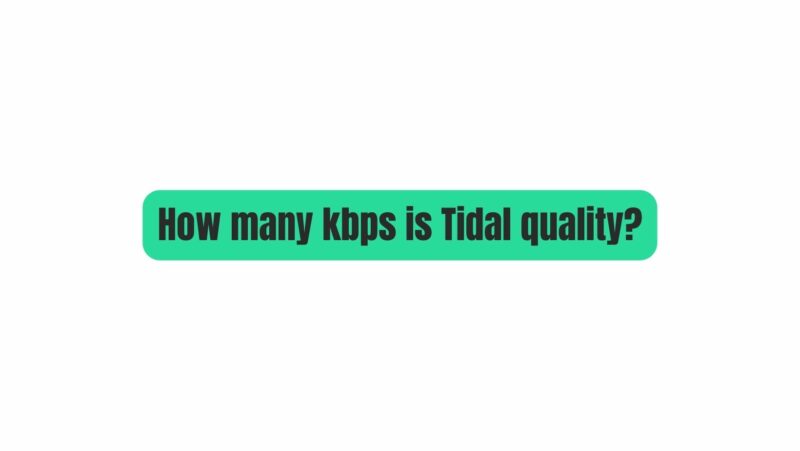Tidal, a prominent music streaming service, has gained recognition for its emphasis on providing high-quality audio to its subscribers. One of the primary ways audio quality is measured in digital music streaming is through bitrate, typically expressed in kilobits per second (kbps). In this comprehensive article, we will delve into Tidal’s sound quality, explore its various streaming quality tiers, and uncover how many kbps each tier offers to listeners.
Understanding Bitrate in Music Streaming:
Before we explore Tidal’s sound quality, it’s crucial to understand the significance of bitrate in the context of music streaming:
- Bitrate: Bitrate measures the amount of data transmitted per second in a digital audio file. Higher bitrates generally result in better audio quality and greater fidelity, as they can convey more detail and nuances in the music.
- Audio Codecs: Codecs are algorithms used to encode and decode audio data for streaming and playback. Different codecs have varying levels of compression and can affect audio quality. Lossless codecs preserve all audio data, while lossy codecs compress audio data by removing less perceptible information.
Tidal’s Sound Quality Tiers:
Tidal offers a range of sound quality tiers, each designed to cater to different listener preferences and network conditions:
- Standard Quality: Tidal’s standard quality tier provides music at a bitrate of 96kbps (AAC codec) for mobile devices and 160kbps (AAC codec) for desktop listening. This tier is suitable for users with limited data plans or slower internet connections.
- High Quality: Tidal’s high-quality tier offers streaming at a bitrate of 320kbps (AAC codec). This setting balances audio quality and data usage, making it a popular choice for most listeners.
- HiFi Quality: Tidal’s HiFi tier is where the platform truly excels in audio quality. It provides music streaming at a bitrate of 1411kbps using lossless FLAC (Free Lossless Audio Codec) compression. This level of quality is equivalent to CD quality (16-bit/44.1kHz) and is favored by audiophiles and music enthusiasts.
- Master Quality: Tidal’s Master Quality tier represents the highest sound quality available on the platform. It offers music streaming at bitrates exceeding CD quality, with support for high-resolution audio formats such as MQA (Master Quality Authenticated). This tier is designed for those who demand the utmost in sonic fidelity.
How Many Kbps is Tidal’s Sound Quality?
To provide a clear breakdown of Tidal’s sound quality in terms of kbps:
- Standard Quality: 96kbps (AAC codec) for mobile and 160kbps (AAC codec) for desktop.
- High Quality: 320kbps (AAC codec).
- HiFi Quality: 1411kbps using lossless FLAC compression.
- Master Quality: Bitrates vary, but they can exceed CD quality, often reaching several thousand kbps for high-resolution audio formats like MQA.
Benefits of Each Tidal Sound Quality Tier:
Each of Tidal’s sound quality tiers offers its own set of benefits:
- Standard Quality: Suitable for users with limited data plans or slower internet connections, while still providing a basic level of audio quality.
- High Quality: Strikes a balance between audio quality and data usage, making it a practical choice for most listeners.
- HiFi Quality: Ideal for audiophiles and music enthusiasts who prioritize uncompromised sound quality and wish to experience music at CD quality.
- Master Quality: Offers the pinnacle of sound quality with bitrates exceeding CD quality and support for high-resolution audio formats, catering to those who demand the utmost in sonic fidelity.
Conclusion:
Tidal offers a range of sound quality tiers to accommodate diverse listener preferences and network conditions. Whether you prioritize data conservation, a balance between quality and data usage, or the highest level of sound fidelity, Tidal provides options to cater to your specific needs. Understanding the bitrates associated with each tier can help you choose the sound quality that best suits your listening experience on the platform.

